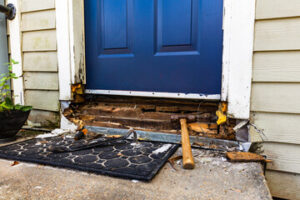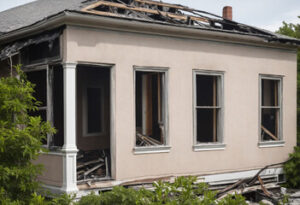If you’re dealing with a sagging foundation, there are multiple ways to repair it. Choosing the right method depends on the severity of the problem and your budget.

A qualified foundation specialist will inspect your home for signs of settling, cracking, and bowing walls. They’ll also look at the soil conditions around your house to see if they have impacted your foundation. Click Here to learn more.
Most foundation cracks are not structural and can be repaired with a bit of DIY elbow grease. If the cracks are 1/8 inch wide or less and aren’t expanding or leaking, they can be patched with a concrete sealant and repainted. However, you must keep an eye on them, and be sure to call a professional if they start to expand or leak. It’s also important to be prepared for a larger crack as this will likely require more involved repair methods like epoxy injection.
A simple caulk designed for concrete can work well to fill in hairline cracks, especially if you have a lot of these. It’s important to scrub the surface of the crack before applying it, so it can adhere properly. It’s also a good idea to wear protective eyewear, gloves, and a dust mask when using a hammer or chisel. Concrete and cement can chip and project small particles into your eyes or skin, so these precautions will help to ensure safety.
Settlement cracks are common in new home construction and are a result of the house “settling” after the concrete foundation is poured. This settling is normal and can cause cracking of the foundation walls as the weight of the building shifts to different parts of the structure.
Depending on the severity of the cracks, you can often repair these with polyurethane injection. This is an extremely flexible resin that can be injected into the crack and will expand when it comes in contact with water, effectively sealing the crack. Polyurethane is typically a much better choice than epoxy for this type of crack repair, because it can be injected at any depth and does not need to be removed for the next step of concrete repair.
The last step in repairing this type of crack is to apply a waterproof masonry sealer. This will protect the concrete from moisture infiltration and can extend the life of the foundation. This is especially important if the cracks are located in areas where there might be standing water, such as near downspouts or a poorly graded yard. It’s also a good idea for homeowners to make sure that the gutter system is clean and directing water at least 10 feet away from their home, as this will prevent water pooling around the foundation.
Shimming
Many foundation cracks are minor and can be repaired with epoxy ($1,500-$3,000). If the crack is wider than one-eighth of an inch or stair-step, you’ll need to hire a contractor for shimming, which involves building a series of concrete supports in the affected area.
This is a temporary solution that’s useful for correcting minor unevenness, leveling foundation walls and countering inward pressure from soils. However, the underlying issues still need to be addressed.
The best solution is a foundation repair system that uses steel piers to arrest shifting and settlement. These piers are placed beneath the foundation, usually in a grid pattern around the perimeter of the home. They can also be placed in the interior of a home for underpinning support. Foundation piers are usually made of hot-dip galvanized steel and come in a variety of sizes. Depending on the type of problem, helical or push piers may be used to lift the foundation back to its ideal elevation.
Once the piers are in place, hydraulic jacks will be used to slowly lift the sunken areas of the foundation. This is typically done from underneath the house, so tunnels are dug under the slab to access the beams and piers.
This is a time-consuming process that can cost more than other types of repairs. The cost will depend on the size of your home, the accessibility of the damaged areas and whether any landscaping needs to be removed or replaced.
If you are interested in selling your home, having a foundation repair can boost its value and provide a transferable warranty that’s good for the next owner. You’ll have to disclose the repair to potential buyers, but you can often sell your home at a higher price than you would otherwise.
Foundation replacement is a complex construction process that involves digging out the existing foundation and building a new foundation in its place. This is typically necessary when the existing foundation is unstable due to structural damage or because it can’t meet local building codes and regulations. This option is generally considered more expensive than other foundation repair options, but it can add substantial value to your home and ensure that your foundation meets current standards.
Underpinning
Underpinning is one of the most long-lasting types of foundation repair, and it’s often recommended when a building experiences a significant change in its load-bearing soil. This change can occur over time, or it may be a result of a natural disaster such as an earthquake. When a foundation is underpinned, it’s bolstered by placing additional supports underneath the structure to transfer the weight of the building onto these new support piles.
It’s important to note that underpinning isn’t a permanent fix for foundation issues, but it is often the best way to prevent further damage from occurring. Typically, underpinning involves placing a series of steel or concrete piers underneath the building. These piers are designed to reach deep into the soil where there’s a lower risk of movement. The piers are then attached to the foundation, and the weight of the building is transferred from the foundation to the new piles through these attachment points.
There are several signs that your foundation is in need of underpinning. One of the most common is cracking in walls and floors that are wider than hairline cracks. These cracks can form horizontal, vertical, diagonal, or stair-step patterns and continue to grow over time. Other signs include sloping or uneven floors, and a noticeable settlement or shifting of the building.
If you notice any of these symptoms, it’s important to get your home underpinned as soon as possible. A foundation repair specialist will be able to recommend the appropriate underpinning solution for your home.
When a slope fails due to creep, it can cause landslides that are dangerous for residents and property alike. Underpinning can help stabilize these slopes and slow or even reverse their downward movement. It’s also possible that a slope is failing due to moisture, and underpinning can be used to stop the problem by adding drainage or increasing groundwater flow around the foundation. In addition to slope failure, underpinning can be used to repair a foundation that has shifted due to poor construction or renovations. For example, adding an extra story to a house will add substantial weight that can strain the existing foundation.
Replacement
Foundation replacement is the more drastic option for addressing serious damage. It’s also a more costly process. However, this solution can be the better choice if the foundation is too damaged to be repaired with modern solutions. Regardless of whether you decide to replace your home’s foundation, it’s important to work with an experienced contractor that has a strong reputation and the right tools for the job.
In addition to repairing cracks, the foundation repair process will also stabilize the sinking or settling structure and restore its strength. This helps to reduce stress on the structure and prevent further damage, such as buckling floors and sticking doors and windows. A quality-check is performed after the work is completed to ensure that all issues have been addressed and that the foundation is safe and stable.
Before starting repairs, a professional will create a detailed plan of action that outlines how the project will be conducted. This will include a description of the problem, its cause, and what steps need to be taken to correct it. The professional may recommend that you obtain a structural report from an engineer to fully understand the nature of the issue and its potential effect on other areas of your house.
Once the repair plan is finalized, the crew will dig around the foundation to remove any dirt that has accumulated there and to expose the area underneath. They will then install steel piers that are driven deep into the ground to reach bedrock or stable soil layers. These piers are known for their durability and can withstand significant loads, so they provide effective long-term support. They’re also less disruptive to the existing landscaping than other excavation methods.
The piers are then connected to support beams that are then tied into the floor joists of the home. After the concrete is poured, it will be allowed to cure for up to 30 days. Then, the crew will backfill the area and compact the soil, making sure that it is even with the surrounding grade. The crew will also replace any concrete that was removed during the repair, and they’ll do their best to keep any outdoor features and landscaping intact.
